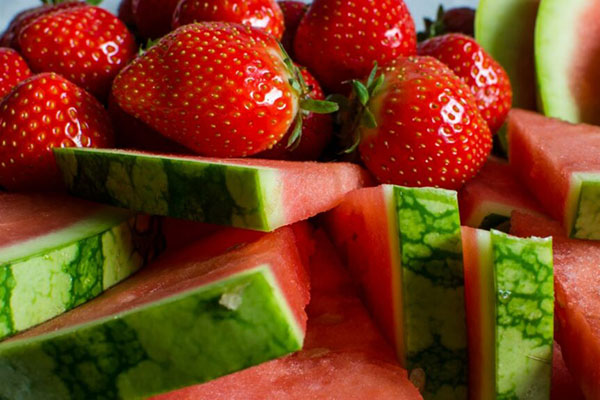Your cart is currently empty!

20 Jun The 2 Fruits You Need To Plant In Your Garden This Year
If you love the summer, you also probably love tasting juicy fruits on a hot summer day! Strawberries and watermelon are one of the most popular fruits to eat during the summer months, so why not plant these fruits in your garden to have access to them without the extra costs. If you are interested in learning how to plant and harvest these delicious fruits, continue reading!
1. STRAWBERRIES
Preparation And Planting
Strawberries should be planted in the spring. (If you are planting young plants, make sure that they are certified, and disease free.) Choose plants with large crowns and healthy, light-coloured roots. Prepare your soil with 1-2 inches of organic matter (like compost, or well-rotted manure). To plant your strawberry plants, make a hole big enough to spread the roots. Then, make the center of the hole into a hill, and place the crown at soil level. Spread the roots downward and bury the strawberry plant so that the soil goes halfway up the crown.
Watering
Your strawberries will need 1 to 2 inches of water per week. This is especially important during the formation of the strawberry, from early bloom until it is time to pick them.
Harvesting
Pick your strawberries when they are fully ripe! Leaving the berries on the plant for a day or two after they are fully coloured will ensure they are fully ripe. To pick them, snap the stem directly above the berry, rather than pulling on the berry itself.
2. WATERMELON
Preparation And Planting
Plant your watermelon after the soil is warm and there is no danger of frost. Watermelons grow best on sandy soil, and it is important to plant them on raised mounds. Watermelon vines need lots of space, so plant the seeds 1 inch deep in hills spaced 6 feet apart. Make your rows 7 to 10 feet apart. After the seedlings start sprouting, it is a good idea to thin them to about three plants per hill.
Watering
Watermelons have deep roots, so you rarely need to water them. In cooler areas, you can get floating row covers, drip irrigation, and black plastic mulch to help produce a great crop in a short season.
Harvesting
It can be hard to tell when watermelons are ripe, so here is a list of things to look for:
- Light green, curly tendrils on the stem
- Surface color of the fruit turns dull
- The skin is tough and resists the thumbnail
- The bottom turns a yellowish color
If you want to grow strawberries, watermelon, or both, this blog will ensure that you can plant them properly! Did you know that pests can ruin your crop? If you are planting an organic garden, you should ensure that all pests can be taken care of without the use of pesticides. For more information, check out our high-performance neonic-free bio-pesticide products here! If you are interested in learning more about growing a vegetable garden, download our free e-book here to read about 3 Common Summer Vegetables And How To Grow Them, Tips To Grow A Vegetable Garden, and more.


